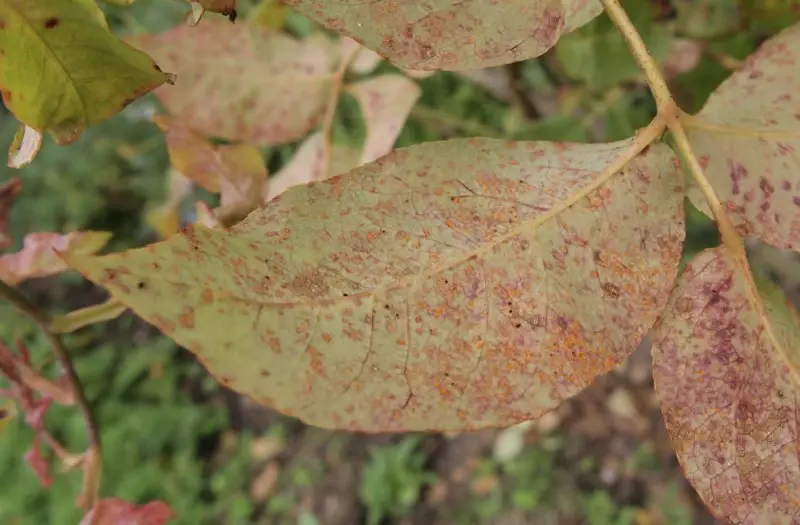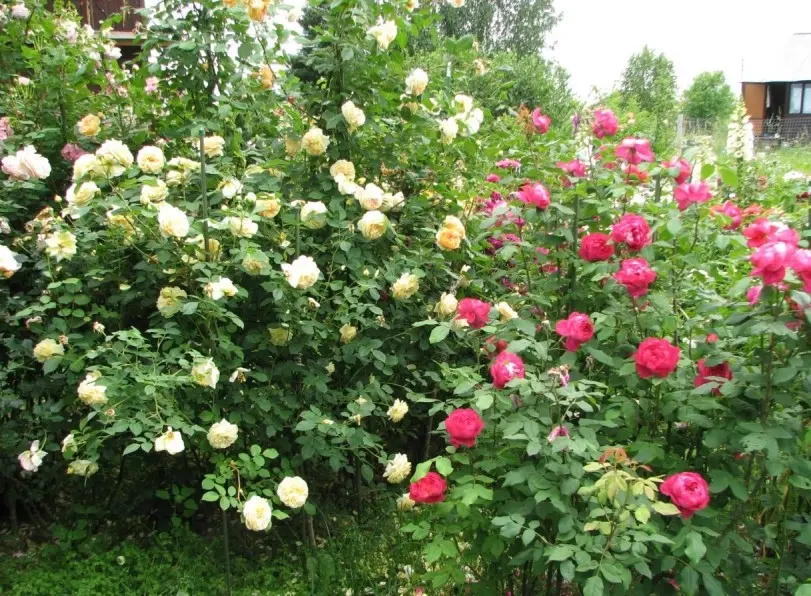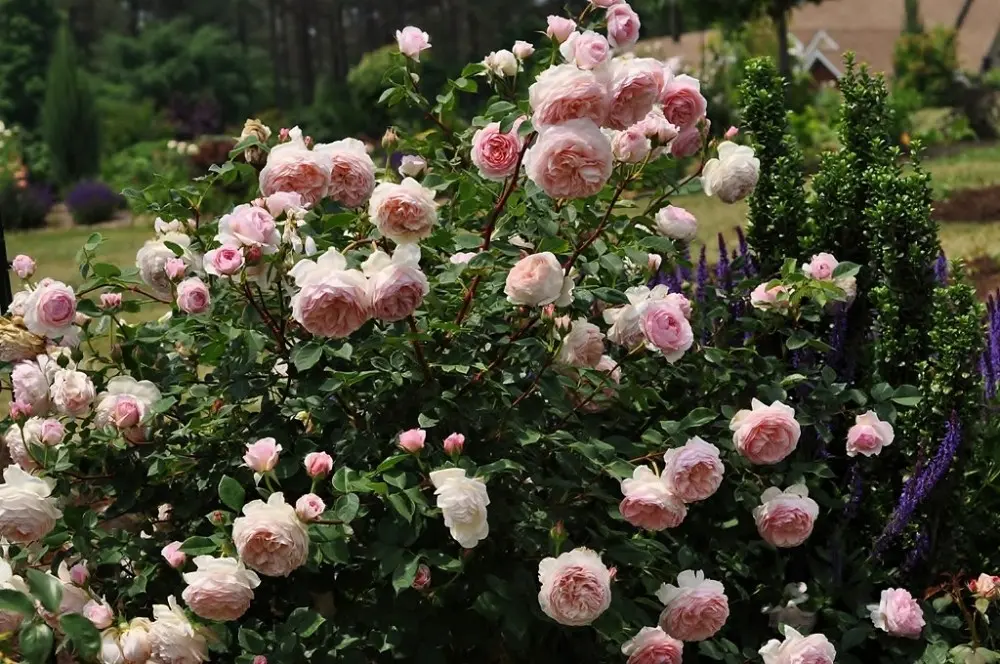Contents
Austin roses are a specific group of plants. These flowers are very popular today. Their features are manifested in beautifully shaped elastic buds, as well as the pleasant smell that the flowers of the culture spread. This type of roses appeared in the 80s of the twentieth century. It was then that breeder David Austin obtained English roses by crossing Damask and Bourbon varieties with tea hybrids and floribunda.
The smell of roses
One of the main tasks that Austin set himself during the creation of flowers was to return to the flowers their smell. And this goal was achieved by the breeder. All David Austin English roses smell, but their varieties differ in the degree of saturation of the aroma. Flowers of several species exude the classic aroma of an antique rose. Examples include Gertrude Jekyll, Mayflower, Falstaff, Manstead, William Shakespeare 2000 and Susan William-Ellis.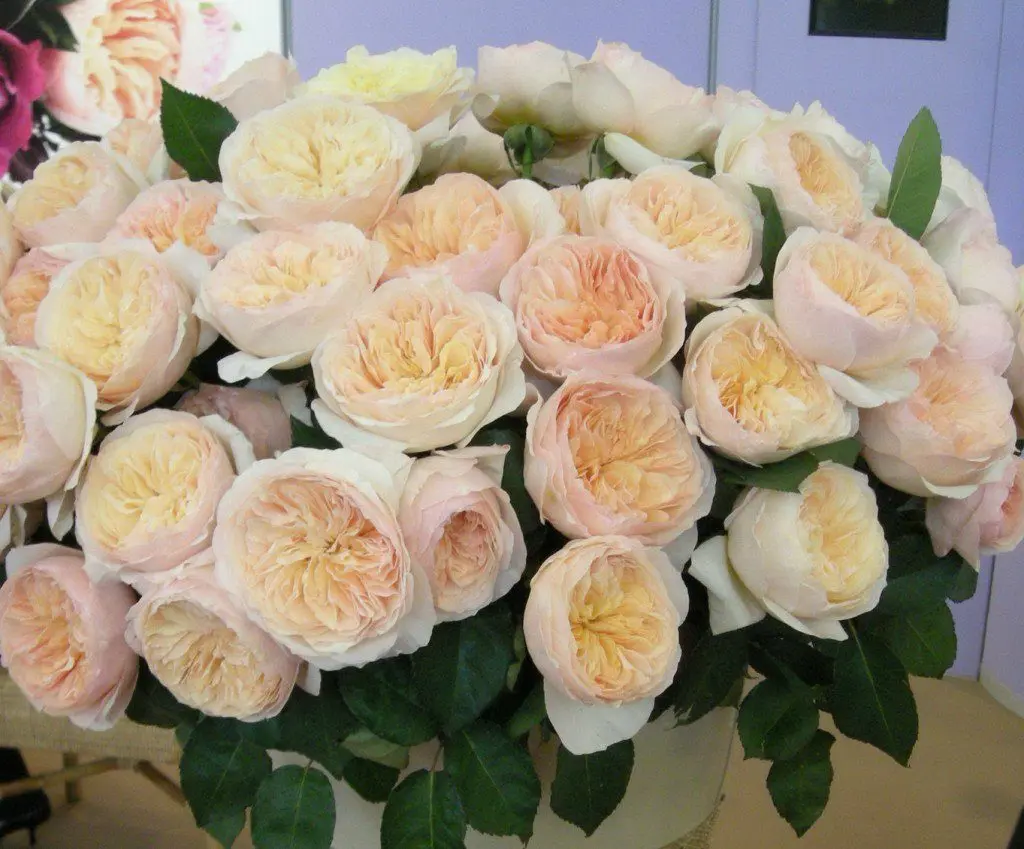
Flowers of other varieties – Abraham Derby, Lady Emma Hamilton – have the smell of fruits (often peaches). The Benjamin Britten flower has a sweet, fruity caramel scent, while the Summer Song rose exudes an aroma that combines fruity tea and the wormwood bitterness of chrysanthemums.
Some English roses smell like the forgotten scent of myrrh. This fragrance is light, not sharp, reminiscent of the smell of soap. This smell has a distinctive property – the ability to favorably emphasize and enhance other aromas. It fits perfectly into the “bouquet” exuded by the closest relatives. Myrrh smells like Constance Spray, Queen of Swieden. Light notes of aroma can also be caught in the varieties Claire Austin and Pilgrim.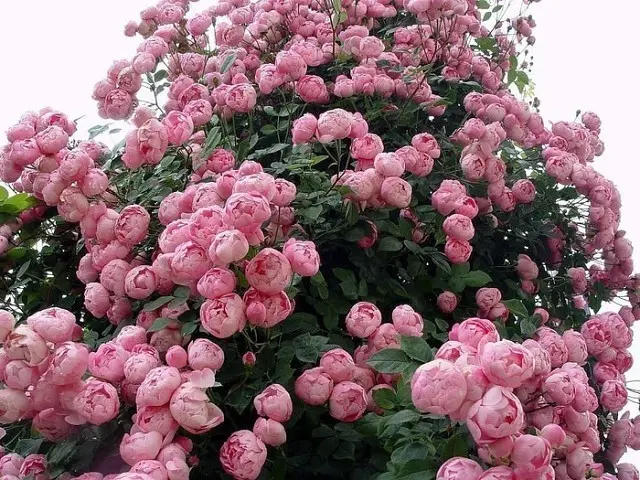
Many varieties of Austin smell like tea: Crocus Rose, Pegasus, Molyneux, Teasing Georgia, Pat Austin, Grace, William Morris. Often, the tea note is a component of a fruity, spicy, clove or citrus smell. For example, the flowers of Princess Alexandra of Kent enrich the light tea aroma with hints of lemon and blackcurrant, while Crown Princess Margaret smells of tea with tropical fruits. Golden Celebration exudes the aroma of tart wine, tea and strawberries, and T Clipper – oriental spices and tea.
Video “Best varieties”
From the video you will learn about the most common and well-known varieties.
Landing
David Austin roses are planted in a special way. The procedure, which is usually carried out at the initial stage for other types of roses, is not applicable to English ones at all. Before planting, seedlings must be soaked in water with substances dissolved in it that stimulate growth and root formation. Next, you need to choose a place for planting plants and prepare pits for seedlings.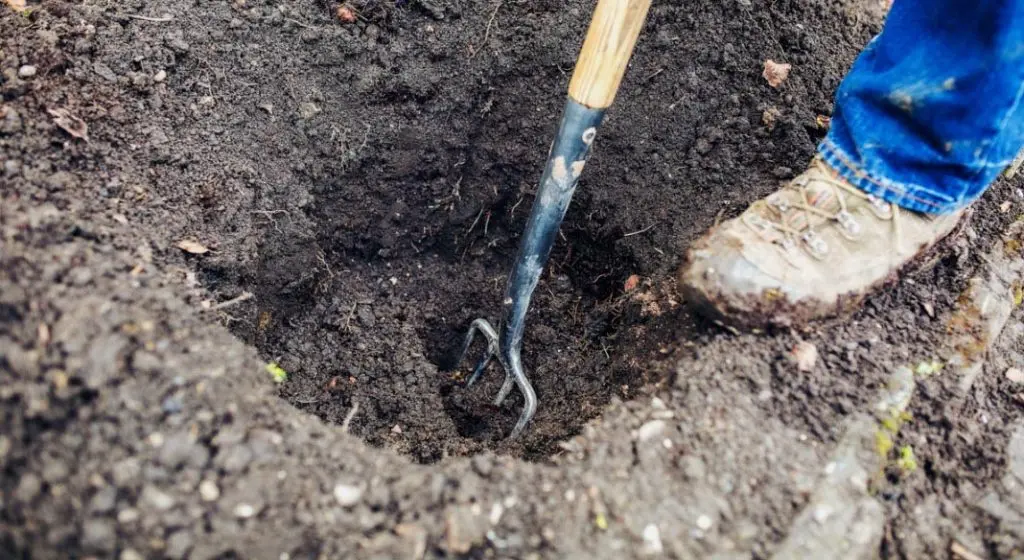
When choosing a territory for growing flowers, it is necessary to take into account the specifics of the culture:
- Abundant lighting harms plants, so the area where they are planned to be grown should be illuminated with direct sunlight for no more than 5 hours a day.
- The area under the plants should not suffer from melt water in spring and remain snowless in winter. Therefore, the most acceptable option for planting roses near gazebos, porches, fences and other buildings.
After choosing a site that meets the requirements of the site, it is worth preparing pits for planting seedlings. The depth parameters should be 0,5×0,5×0,5 meters. The pits are usually filled with fertile garden soil mixed with humus. Further, 10 liters of water are poured into each well and left in this form for a day.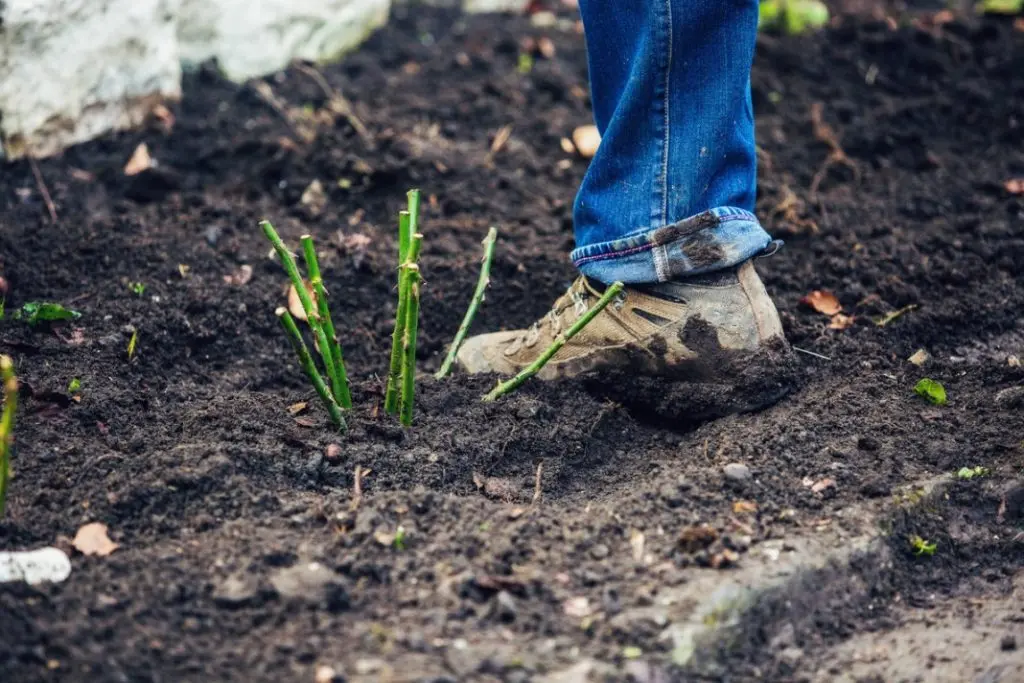
When planting, it is worth remembering that the grafting site should be at a depth of no more than 0,07 meters, while the roots are placed evenly in the pit. The first 24 hours after planting, you need to moisten the culture in the amount of 45 liters of water for each bush. After the soil is spudded. Such actions serve as the basis for the full development of the root and its processes.
winter shelter
English roses are delicate plants, so the harsh winters of our latitudes have a detrimental effect on them. In order to avoid the death of flowers, they must be prepared for winter. An important component of the preparation is proper care of the crop throughout the summer, including systematic feeding of individuals.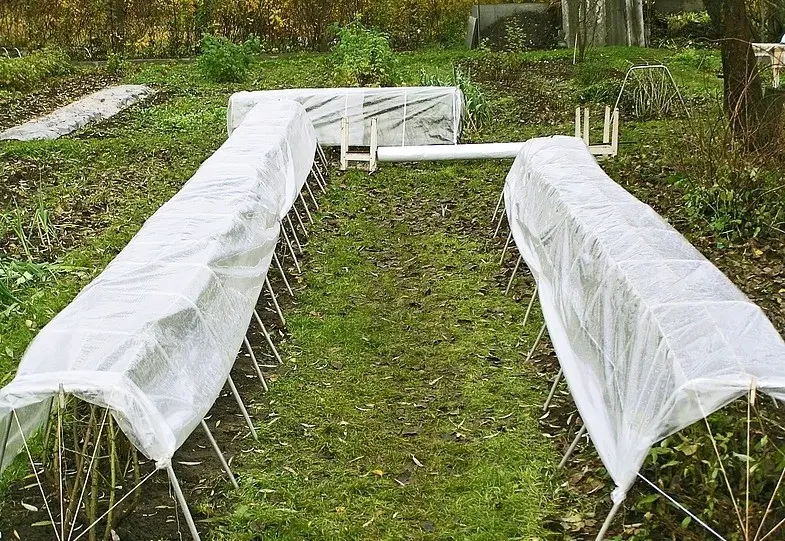
As for the preparation of culture for winter, it consists of a series of successive actions.
In autumn, you need to allow the buds to bloom and lose their petals on their own. It is not worth picking off the color in advance, because this way you can interrupt the full ripening of the shoots. As it gets colder, the leaves that remain on the stem must be eliminated, and the lateral stems that have not matured should be cut out. After that, you can begin the procedure for warming roses.
It is necessary to completely cover the plants only after a persistent decrease in temperature indicators (below 0, but not more than – 10 °).
Regardless of the type of bush, David Austin’s English roses spud and only then create a “shelter”. First, a mesh is stretched around the flowers or foam panels, roofing material or plywood boards are installed. After that, the shelter is covered with dry leaves, shavings, spruce branches or humus. Weaving plants are laid on top of the ground, fixed and covered with a thick layer of leaves (30 centimeters). Next, a film or roofing material is placed on the shelter. Remove the “design” in the spring after the temperature reaches 0.
Watering and feeding
Caring for rose varieties has the same structure as caring for other representatives of the culture. The process consists of regular watering, proper feeding, timely pruning of bushes and the fight against parasites and diseases.
Austin roses are not too demanding on water, so it is worth moistening the soil to a depth of no more than 2 centimeters. It is better to water individuals in the evening, while the amount of liquid directly depends on the type of bush. For example, plants that curl or weave require 15 liters of water, and bush plants require 10 liters.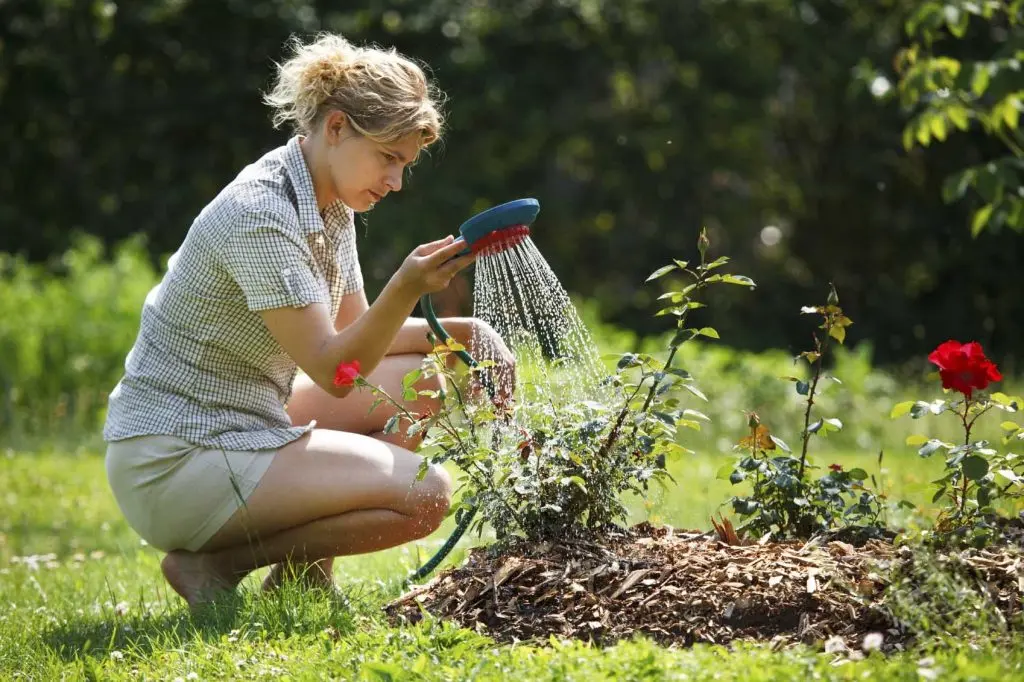
Fertilizers begin to be applied in the second year of life of individuals. The first feed consists of nitrogen, which will enable young stems to form. The next contains a large amount of nitrogenous and phosphorus substances and is carried out during the period of active formation of buds. In autumn, plants are fertilized with potassium, which will help the flowers “survive” the winter.
Prune English roses in spring and autumn. Weak and thin branches are completely eliminated, after which the bush is formed:
- To obtain a low bush, half the length of the shoots is removed.
- To form wide bushes, a third of the side stems are cut.
- The rate of shortening of the stems of climbing varieties is 1/5 of their length.
After circumcision, the culture should be fed with complex top dressing.
Disease Prevention
Varieties of English roses are little susceptible to disease and pest attack. However, sometimes these flowers become infected with the disease. It is no secret that it is much easier to prevent plant diseases than to deal with them later. Therefore, special attention when growing roses should be given to the prevention of their diseases.
- Anthracosis. Symptoms of the disease are small black spots on the leaves of plants, this disease resembles black spot. Anthracosis does not affect flowers, so it is not easy to recognize it. As the disease develops, the shape and size of the spots on the leaves change, and then the organs themselves become deformed. An infected individual develops poorly, and after a while it completely dies.

Anthracosis infection can be prevented only by taking into account the characteristics of the pathogenic fungus and its life cycle. Since the pathogen overwinters perfectly right on the plants, with the onset of spring, its new spores begin to develop. Therefore, for prevention, it is worth spraying the culture with a solution of tincture of ash or mullein. You can also use a manganese solution. Twice a season, plants should be pollinated with wood ash, which can also be sprinkled on the soil around the bushes.
- Rust. The development of the disease begins in mid-spring after the opening of the kidneys. First of all, growths appear on the rose bushes. The disease develops especially actively in conditions of high humidity. Further, rust appears on the leaves in the form of yellow spots, which eventually cover the organ completely. Flower stems thicken, cracks form on them. At the end of summer, the growths darken and remain on individuals throughout the winter.

Prevention of the appearance of rust on roses provides for the timely cleaning of fallen leaves not only in autumn, but also in summer as they fall. Otherwise, disease spores attack healthy plants.
Varieties of varieties
Roses tolerate the shading of the site well, but they also do not like the sun’s rays. Therefore, they quickly gained popularity among domestic gardeners. However, flowers do not tolerate cold and frost, so varieties that died in winter were replaced by more resistant plants.
David Austin roses are represented by many varieties, the most popular of which are:
- Abraham Derby. It has a bud of the usual shape, the color of the petals ranges from copper to apricot. Sometimes such a culture is grown as a climbing one. Derby is resistant to most diseases, grows actively. When grown as a bush, the shoots are somewhat deformed under the weight of the flower head.
- Benjamin Britten is a shrub that grows up to a meter tall. The bud is cup-shaped, after opening the petals it becomes rosette. The petals are usually red with an orange tinge. The variety is unpretentious, practically does not become infected with powdery mildew and spotting. In the season of heavy rains can change shape.

- William Shakespeare 2000 – a variety that grows in a straight bush. The buds of such roses are cup-shaped, dark red. Individuals are characterized by resistance to various diseases and long flowering.
- Graham Thomas is a semi-climbing plant with bright yellow flowers. The stems of the culture are strong, do not droop. Flowering is active and long.
- Charlotte – a bush up to one and a half meters high, has yellow “double” flowers. The variety is very resistant to cold and frost.
- Gertrude Jekyll – shrub up to 1,2 meters in height. The flowers are pink in color and have a strong fragrance. Disease resistance is significant, flowering is active and long.
- William Maurice is a climbing type with rosette-shaped peach-pink flowers. In the center the color is more saturated, outside the petals are almost white. Highly resistant to spotting and powdery mildew. Easily tolerates long rains.

It is generally accepted that all varieties are perfectly combined with each other in terms of the color of the buds and the shape of the bushes. Therefore, all types of English roses get along well in one area. So you can safely experiment by growing various representatives of varieties annually.
So, English roses, bred by Austin, have many advantages and are therefore very popular among gardeners. Today, these flowers are massively grown by gardeners in the country and home gardens. Disease resistance largely determines this interest in roses. And the incredible aroma exuded by flowers distinguishes them favorably from plants of the family.
Video “Planting roses”
From the video you will learn about the effective planting of bushes.











